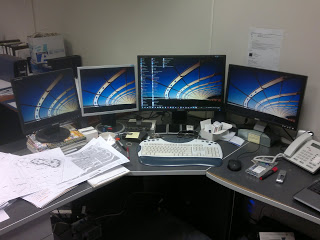I’ve had a mixed experience using the Nvidia GTX 980 card in Navisworks and Revit, but I have one particular tip that helped in Navisworks 2017:
Turn OFF CPU Occlusion Culling
My CPU is an i7-6700K that I generally OC to 4ghz. But obviously there is some slowdown when both of the Occlusion Culling boxes are ticked.
Aside from the usual tips of using ‘Guarantee Frame Rate’, Automatic Clipping Planes, and playing around with the File Options – Frame Rate, I found that turning off CPU Occlusion Culling and leaving GPU Occlusion Culling on made a real difference for the better.


